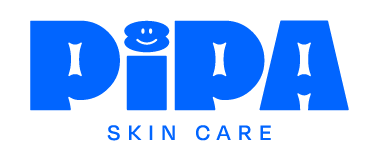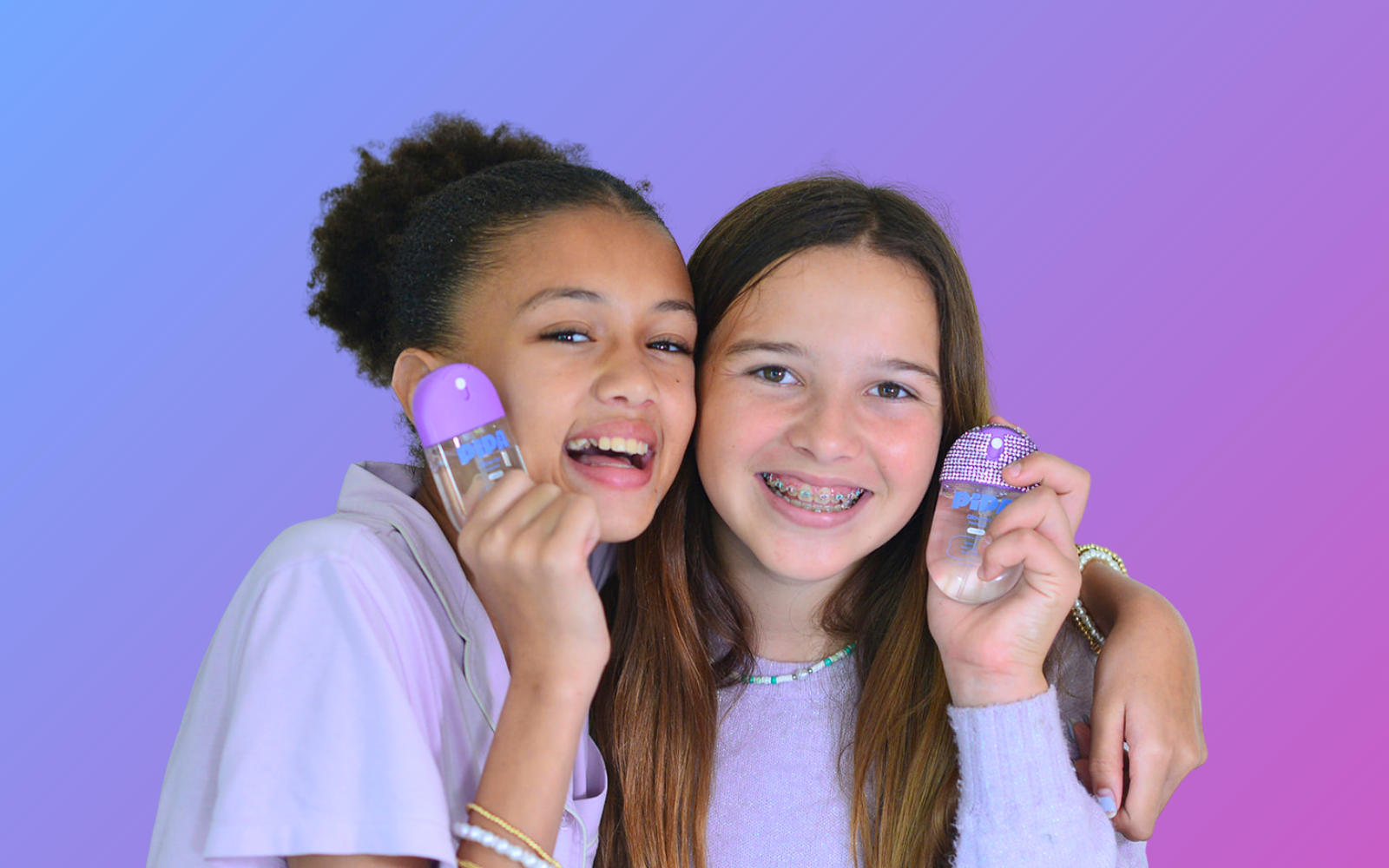Your 10-year-old comes home from school asking for the same skincare routine they saw on TikTok (the one with 12 steps and ingredients you can't pronounce). Meanwhile, their 15-year-old sibling is dealing with completely different skin concerns. Sound familiar?
Here's what most parents don't realize: tween skin (ages 8-12) and teen skin (ages 13+) are as different as toddler skin and adult skin. Using the wrong products during these crucial developmental years can actually cause more harm than good.
The Science Behind Young Skin: Why Age Really Matters
Tween Skin (Ages 8-12): The Sensitive Years
Children's skin is about 20-30% thinner than adult skin, contains more water, and has an immature barrier that reacts more strongly to irritants. During the tween years, several key differences make their skin uniquely vulnerable:
Thinner, More Delicate Structure
- Skin barrier is still developing and easily disrupted
- Higher water content but weaker moisture retention
- More reactive to harsh ingredients and environmental stressors
Lower Oil Production Before puberty hits, sebaceous (oil) glands are relatively inactive. This means tween skin tends to be:
- Drier than teen or adult skin
- More prone to irritation from over-cleansing
- Less likely to develop the classic "oily T-zone" of adolescence
Sensitive Microbiome Before puberty, the skin's microbial community is dominated by Streptococcus and other bacteria, creating a delicate ecosystem that harsh products can easily disrupt.
Teen Skin (Ages 13+): The Hormone-Driven Changes
As puberty begins, everything changes dramatically:
Thicker, More Resilient Skin As children enter adolescence, their skin thickens and becomes more resilient due to increased collagen and elastin. This structural change means teen skin can handle stronger ingredients—but still needs a thoughtful approach.
Increased Oil Production Hormones released during puberty stimulate sebaceous glands to make more oil (sebum). Testosterone increases sebum production and sweating, and as puberty progresses, these oil glands often become over-active, leading to clogged pores and acne.
Microbiome Shifts After puberty, oil-loving bacteria such as Corynebacterium and Cutibacterium predominate because of the increased sebum content. This explains why acne becomes more common during the teen years.
The Ingredient Danger Zone: What to Avoid and When
Red Flag Ingredients for Tweens (Ages 8-12)
Dermatologists are seeing kids with rashes caused by products not meant for young skin. Here's what pediatric dermatologists say to absolutely avoid:
Retinoids/Retinol
- Why it's harmful: Over-dries developing skin and increases sun sensitivity
- Found in: Anti-aging creams, acne treatments
- The reality: Strong "anti-aging" or treatment ingredients are inappropriate for developing skin. Retinol, vitamin C, alpha- and beta-hydroxy acids (AHAs/BHAs) and peptides can over-dry the skin, damage the barrier and cause irritation
Vitamin C (Ascorbic Acid)
- Why it's problematic: Can irritate sensitive skin and is unnecessary for children
- Found in: Many "brightening" serums and moisturizers
- Watch out: Some popular kids' brands include this ingredient
AHAs/BHAs (Glycolic, Lactic, Salicylic Acid)
- Why it's too harsh: Strip the protective barrier and can cause burning
- Found in: Exfoliating cleansers, toners, "glow" products
- The truth: These can lead to retinoid dermatitis and increased sunburn risk
Chemical Sunscreen Filters
- Why mineral is better: Chemical filters can irritate sensitive tween skin
- Look for instead: Zinc oxide and titanium dioxide (mineral filters)
What Teens Can Handle (With Care)
Once puberty is well underway, thicker teen skin may benefit from:
- Low-concentration retinoids (with dermatologist guidance)
- Gentle BHA for oil control
- Vitamin C in stable formulations
- Chemical sunscreens (if no sensitivity)
The Social Media Problem: When Cool Becomes Harmful
An overload of products exposes young girls to dozens of harsh chemicals, and a costly beauty ideal. The rise of "Sephora kids" and 10-step routines marketed to tweens is causing real skin damage.
What Parents Are Seeing:
- Increased sensitivity and rashes from inappropriate products
- Expensive habits formed before understanding skin needs
- Confusion about what's actually necessary vs. trendy
The Solution: Age-appropriate products that still feel grown-up and fun.
The Pipa Difference: Cool Factor Meets Science
At Pipa Skin Care, we solve the impossible puzzle: how to create products that tweens love using while meeting the strict safety standards pediatric dermatologists recommend.
Our Tween-First Formulation Philosophy
Squeaky Clean Foaming Cleanser - While other brands add vitamin C or acids to their cleansers, Squeaky Clean uses:
- Vitamin E to hydrate and protect tween skin
- Aloe Vera for soothing hydration
- Papaya Seed Extract for the gentlest possible enzymatic action
- What's not in it: No harsh AHAs, BHAs, or vitamin C that other "tween" products contain
Smooth Operator Moisturizer - Formulated specifically for tween skin's unique needs:
- Ceramides to strengthen the developing skin barrier
- Squalene to hydrate, nourish, and protect skin
- Vitamin E to hydrate and protect tween skin
- The difference: No lactic acid, vitamin C, or peptides found in competitor products
Skin Saver Hypochlorous Acid Spray - The dermatologist's secret weapon that most parents have never heard of:
- Hypochlorous acid: the same bacteria-fighting compound your immune system produces
- Gentle enough for the most sensitive skin
- Prevents problems before they start (perfect for prevention-focused tween care)
- Why it's perfect for tweens: Provides the "active ingredient" excitement without harsh chemicals
Sun-Sational Mineral Sunscreen SPF 30 - 100% mineral protection designed for young skin:
- Zinc oxide-only formula (no chemical filters)
- Blends clear with zero white cast
- Hydrating without being greasy
- Fun factor: Bright yellow airless pump that tweens actually want to use
Glow Go Refreshing Mist - The perfect "anytime refresh" that tweens love:
- Green tea extract for gentle detoxifying
- Niacinamide for skin barrier support
- Rose water for hydrating glow
- Backpach worthy: Purple cap design that looks cool in backpacks and lockers
The Prevention Advantage: Why Starting Right Matters
Here's the secret dermatologists know: younger skin is more delicate, and some ingredients in skin products can irritate the skin, making it more sensitive to sun damage or redness. But starting with the RIGHT routine during the tween years can prevent 80% of the skin issues teens typically face.
The 6-8 Week Window: During ages 8-13, skin takes 6-8 weeks to adapt to new routines. Start good habits during this critical adaptation period, and you might skip the whole "acne treatment" phase entirely.
Prevention vs. Treatment
- Prevention approach: Gentle cleansing + barrier support + sun protection = healthy skin patterns
- Treatment approach: Waiting until problems appear, then using harsh actives = playing catch-up
Building the Perfect Routine by Age
For Tweens (Ages 8-12): The Foundation Years
Morning:
- Skin Saver Hypochlorous Acid Spray (gentle refresh without over-cleansing)
- Smooth Operator Moisturizer
- Sun-Sational Mineral Sunscreen SPF 30
- Glow Go Refreshing Mist (for on-the-go refreshing)
Evening:
- Squeaky Clean Foaming Cleanser
- Skin Saver Hypochlorous Acid Spray (as needed for prevention)
- Smooth Operator Moisturizer
Why this works: Supports the developing skin barrier without overwhelming it with actives.
For Teens (Ages 13+): The Transition Years
Teens can gradually introduce stronger ingredients IF needed:
- Start with the tween routine as a base
- Add targeted treatments only for specific concerns
- Always introduce one new product at a time
- Consider dermatologist guidance for acne or persistent issues
Red Flags: When to Worry About Your Tween's Skin Routine
Immediate concerns:
- Redness, burning, or stinging after using products
- Increased breakouts after starting a "skincare routine"
- Dry, flaky, or tight-feeling skin
- Asking for products with 10+ ingredients
Long-term concerns:
- Obsession with "perfect" skin at a young age
- Spending significant money on skincare products
- Following complex routines copied from older teens or adults
- Using products labeled "anti-aging," "brightening," or "treatment"
The Bottom Line: Age-Appropriate Never Means Boring
The best tween skincare isn't about using baby products or waiting until problems appear. It's about:
- Understanding the science: Tween skin has unique needs that require specific formulations
- Choosing prevention over treatment: Starting right prevents problems later
- Making it fun: Age-appropriate doesn't mean boring—it means smart
- Building healthy habits: Simple routines that work create lifelong confidence
Your tween can absolutely have the cool factor they're craving with products designed specifically for their skin's developmental stage. The key is finding brands like Pipa that understand the difference between what's trendy and what's actually good for young skin.
The takeaway for parents: You don't have to choose between keeping your tween happy and keeping their skin healthy. The right products do both.
Ready to start your tween on a dermatologist-approved routine that they'll actually love? Explore our complete collection designed specifically for ages 8-13, backed by pediatric dermatology research and kid-tested for the fun factor.

